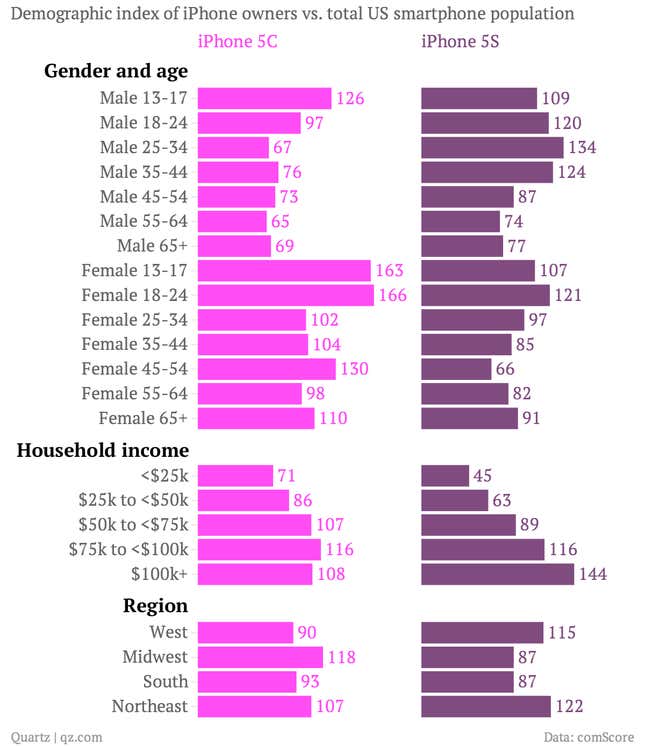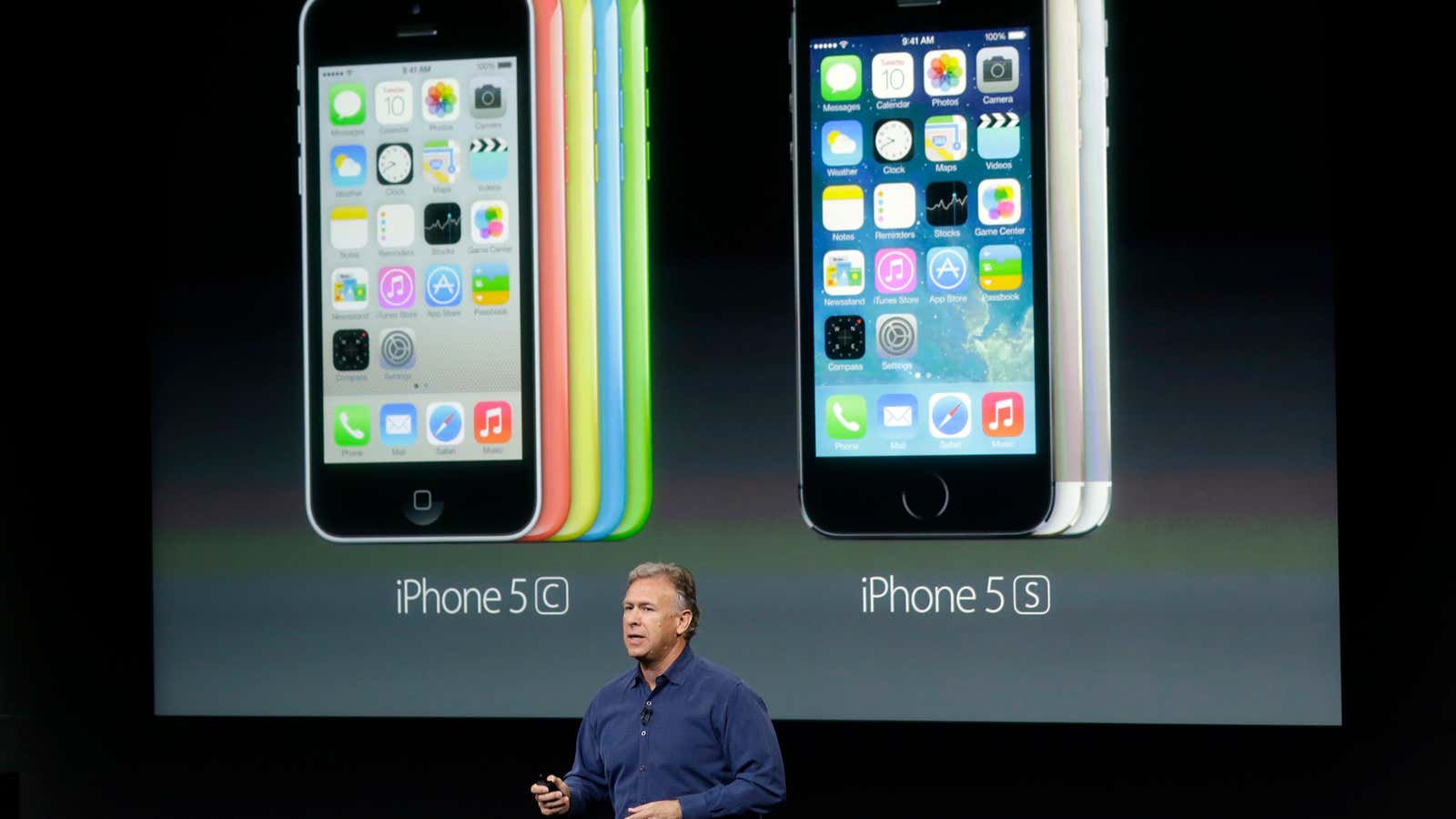When Apple launched the iPhone 5C and 5S last September, it was the first time the company had released two new iPhone models simultaneously. (It may do this again in a few weeks.) The 5C, with a colorful, plastic case, was slower and less expensive. The 5S, featuring a fingerprint-scanning security system and an improved camera, was Apple’s first phone available in gold.
Many—including myself—predicted the 5C would become Apple’s best-seller. It was $100 cheaper and its chip, though slower, seemed “good enough” for most people. But in the US at least, that prediction was wrong. At the end of June, there were 15 million iPhone 5S owners in the US, and 6.4 million iPhone 5C owners, according to comScore.
Who bought the different models? The 5C did great among young men, women—especially those ages 13-24—and Midwesterners. The 5S over-indexes among men ages 25-34, those with household income above $100,000, and Northeasterners.
The chart below shows how the iPhone 5C and 5S index against the typical US smartphone owner, as measured by comScore’s monthly smartphone survey. A score of 100 equals the average, so anything more than 100 suggests ”more popular” and anything below 100 means “less popular.” For context, there were 173 million smartphone subscribers in the US at the end of June, so the 5C represents about 4% of the market, while the 5S represents about 9%.

